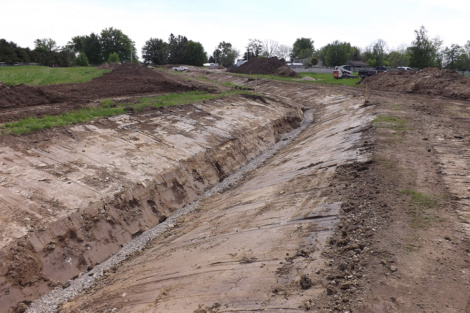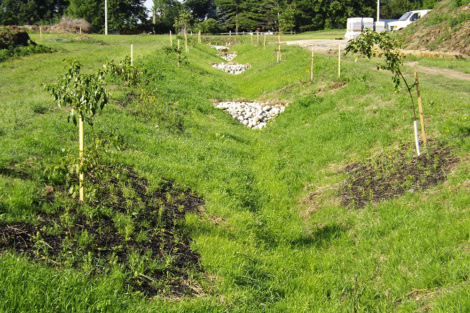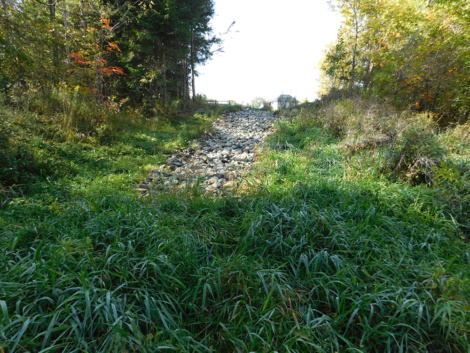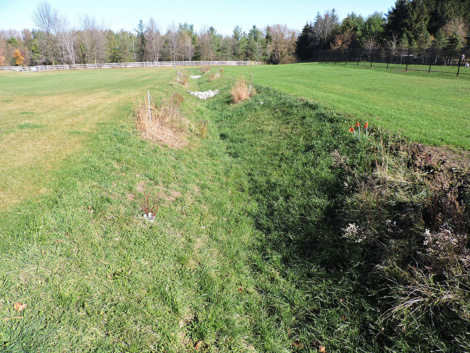Luckhurst Court (Sebringville) – Bioswale
Residential Estate New Development
Luckhurst Development acquired a 2.2 hectare property in Sebringville to develop into four estate lots. The property is located on the south side of Black Creek and has 90 metres of shoreline. A stormwater management plan was required for the property. MTE Consultants Inc. designed the plan, originally proposing a conventional stormwater management method with storm sewers connected to a concrete outlet discharging to Black Creek. This method would have required expensive measures, such as an oil/grit separator, to protect the water quality of Black Creek.
The UTRCA proposed an LID approach as an alternative to the initial proposal for conventional stormwater management. MTE then designed a dry bioswale to treat and carry the runoff towards Black Creek. The bioswale consists of a vegetated swale with regular check dams. Beneath the swale is a perforated pipe surrounded by clear stone. After a rain event, water flows into the bioswale, where it infiltrates through the topsoil and into the native soil. Water that cannot be absorbed by the soil enters the perforated pipe, which carries it towards a riprap outlet into Black Creek.
By choosing a bioswale instead of a conventional storm sewer system, Luckhurst Development achieved a cost saving of approximately $23,000 (or 31%) for their stormwater management.
The bioswale was planted with a mix of 22 species of drought tolerant native plants, grasses and trees, including:
- Big Bluestem (Andropogon gerardii)
- Canada Wild-rye (Elymus canadensis)
- Bebb’s Sedge (Carex bebbii)
- Wild Bergamot Bee-balm (Monarda fistulosa)
- Black-eyed Susan (Rudbeckia hirta)
- Swamp Milkweed (Asclepias incarnata)
- New England Aster (Symphyotrichum novae-angliae)
- Serviceberry tree (Amelanchier canadensis)
- Alternate Leaf Dogwood (Cornus alternifolia)
Angie Hurst, homeowner and representative from Luckhurst Development, said, “We’re thrilled to have the opportunity to do this. Like everybody else, we’re just trying to think a little bit outside the box. Less concrete, less pipes.… This is such a beautiful setting we have here, and we wanted to do everything we could to not disrupt it. So this is just a great way for us to do that. It’s such a nice spot, and it’s so nice to just keep it natural.”






